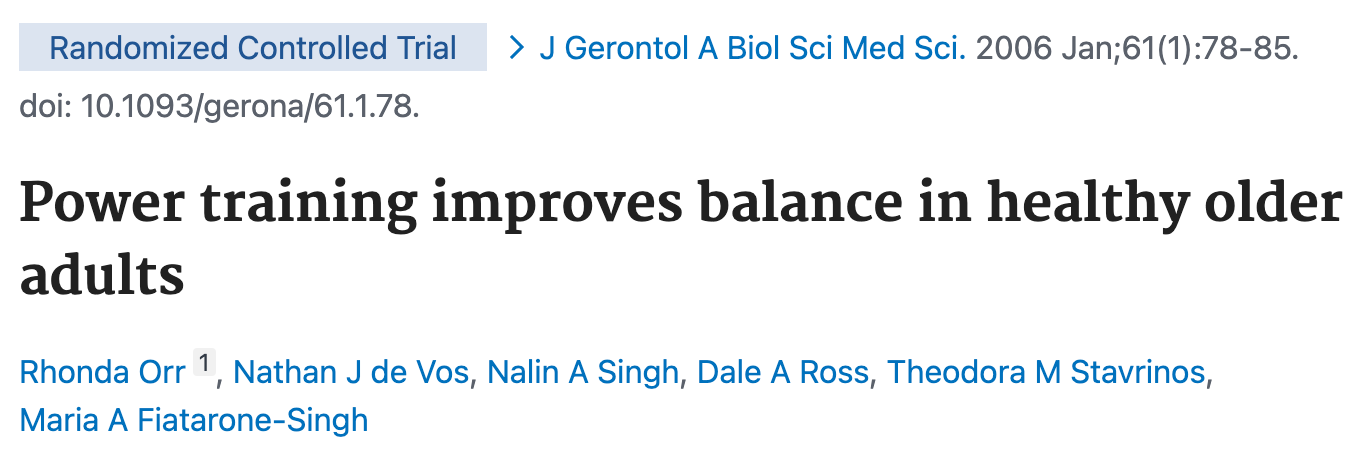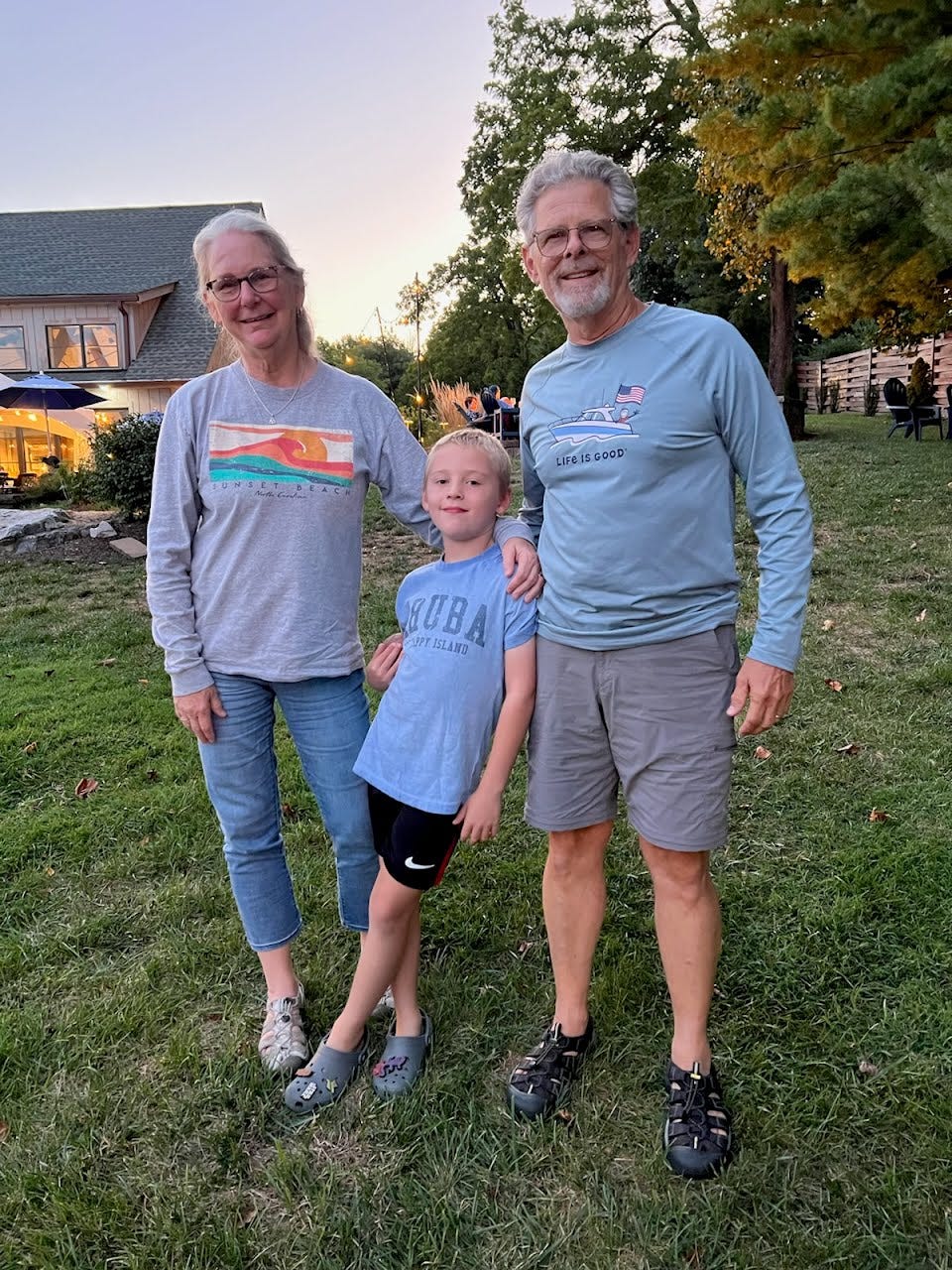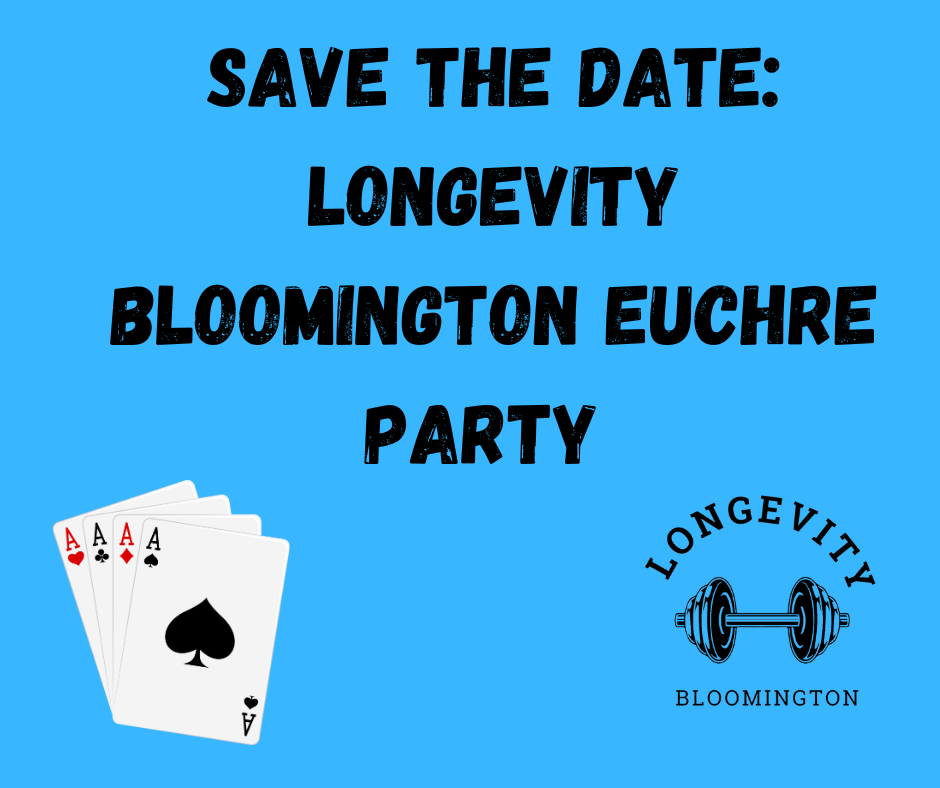Longevity Bloomington Newsletter #32 - Boost Your Muscle Power for Better Functioning as You Age
Research Roundup - Muscle Power
What is muscular “power” and why is it important as we age?
As we age, preserving strength and mobility is key to maintaining an active, independent lifestyle. While many recognize the benefits of strength training for overall well-being, one vital yet often overlooked component of fitness is muscular power.
Muscle strength is the amount of force your muscle can generate. Muscle power is how quickly you can generate that force. Strength is like having a car with a high horsepower engine that can push a heavy load. Power is like a car with impressive acceleration, capable of moving forward quickly with a burst of energy. Simply put, power allows us to move safely and effectively in the face of life's sudden challenges.
Research indicates that without targeted training, muscle power declines at a faster rate than strength as we age. Muscle mass declines ~1% per year after age 30, while muscle power declines ~ 3% each year. As with strength, the goal of healthy aging is to minimize that decline for as long as possible.
This decline in power reduces your ability to quickly activate your muscles. This ability to rapidly engage your muscles is crucial for everyday tasks like standing from a chair, climbing stairs, recovering from a stumble, or navigating uneven terrain. You may not have trouble with these activities currently, but at a 3% loss per year, you may have difficulty performing these activities in the future if you don’t begin working to improve your power now.
If you trip or slip, having enough muscular power (and reaction time) allows you to catch yourself, adjust your balance, or grab onto something to prevent a fall. Similarly, if you're walking and suddenly encounter an obstacle, uneven pavement, or a curb, having enough power and reaction time helps you step over the obstacle in enough time to prevent a fall.
Power is also crucial in sports like golf, tennis, and pickleball because it allows you to generate quick, explosive movements. Whether you are driving a golf ball, making a fast serve, or reacting to a shot, improving your power will help you stay competitive and avoid injury.
If you're reading this newsletter, chances are you want to stay independent and maintain your physical abilities for as long as possible. If that’s the goal, nothing has proven more effective at improving function and reducing the risk of falls than maintaining your muscular power. The ability to generate force rapidly can mean the difference between a fall and staying upright. A 2022 study in the Journal of Biomechanics found that muscle power was more important than muscle strength in preventing falls. From the authors:
“Falls occur soon after a perturbation; therefore, responses to balance losses must be quick to arrest, terminate, or reverse a falling body.
Although a muscle may theoretically be strong enough to stop falls, its inability to produce this force quickly is disadvantageous.
From this perspective, muscle power could be more important than muscle strength in preventing falls”
A large body of research shows that power exercises are more important for maintaining balance, mobility, and preventing falls than just building strength or muscle size. While keeping your muscles strong is still crucial, adding power training to your routine can provide even greater benefits for staying active and independent. In fact, power training has been shown to improve daily physical tasks more effectively than just strength or endurance training alone. Simply put, power is a predictor of your ability to live safely and independently for longer.
Are power exercises safe for adults 50+?
We now know power exercises are crucial for healthy aging, but are they safe for adults over 50? With the right approach—gradual progression, good form, and proper guidance—power exercises can be safe and highly effective. The fear of injury when moving quickly is understandable, but data shows that the risk of sedentary living is far greater than that of controlled, purposeful movement.
Research shows that with appropriate supervision and gradual increases in intensity, the risk of injury during power exercises is low. Studies have demonstrated that power training does not lead to more injuries than traditional strength training, and it can be safely adapted for individuals with health conditions like arthritis or osteoporosis. As long as the exercises are tailored to an individual’s fitness level and precautions are taken, power training can be a safe and effective way for older adults to improve strength and mobility.
From the authors of a 2023 study on the safety of power training for adults 50+:
“Power training is regarded as one of the main counterattack strategies to prevent the deterioration of functional ability observed with aging. However, the current evidence demonstrates that for older people with a broad range of health and functional states, it is safe to engage in a power training program with different exercise modalities. Furthermore, when progression is supervised and proper techniques are applied, there should be no major concern regarding safety. “
Easy Ways to Add Power Exercises to Your Routine
Now that we have established that power exercises are both safe and vitally important in improving balance and physical function as we age, let's discuss how you can begin incorporating these into your exercise routine.
Power training is often associated with images of young athletes running, leaping, and performing explosive movements. If you are able, jumping and sprinting can be great ways to improve your power. However, if your jumping days are behind you, there are still plenty of ways you can improve the ability of your muscles to move quickly in a safe way.
Here are a few general rules when performing power exercises:
Use Lighter Weights – Choose a weight that allows you to move quickly while maintaining control. Power training is about speed, not maximum load.
Focus on Speed – Lift or move the weight as fast as possible during the upward (concentric) phase, then lower it slowly and with control during the downward (eccentric) phase.
Prioritize Proper Form – Quality movement is key. Avoid sloppy technique in an effort to move faster.
Keep Reps Low (3-6 per Set) – Power is best developed with lower reps at high speed, not high-rep endurance training.
Allow Full Recovery Between Sets – Rest for 30-90 seconds to maintain maximum effort in each set.
Train Power Regularly – Include power exercises 2-3 times per week to maintain and improve explosive strength.
If you are already active, the easiest way to start incorporating power exercises is to incorporate speed into the strength exercises you are already performing. For example, you can perform squats or step-ups more rapidly. You can even perform squats from a chair if needed - stand up quickly from the chair and slowly lower yourself down.
You could also perform sprint intervals on a stationary bike. After a warm-up, pedal as fast as possible for 5-10 seconds, then recover for 20-30 seconds. Repeat 6-10 times. This can help improve leg power and cardiovascular fitness.
Another very popular and safe way to incorporate power exercises into your routine is by using a medicine ball. Medicine ball exercises are great for power training because they focus on fast, explosive movements, like throwing or catching, without the slow, controlled lowering phase that can be harder on your muscles and joints. They are also not very technical, so they are easy to learn.
Here are a few videos of some medicine ball exercises that you can incorporate into your program:
Depending on your current fitness level, other power exercises that can be beneficial include jump rope, kettlebell swings, push press and much more! These exercises can be adjusted based on your fitness level, and the focus should always be on moving as explosively as possible while maintaining proper form. Be sure to start with lighter weights and gradually increase intensity as you get stronger.
Should I stop strength training and aerobic exercise and only focus on power?
Power training doesn’t replace strength training; it complements it. A well-rounded fitness routine that includes strength, power, balance, and aerobic exercise offers the best results for overall health and functionality. Experts agree that even a small amount of power training can significantly improve an adult’s ability to move through daily activities with greater confidence and ease.
Incorporating power training into your routine doesn’t have to be scary—it simply means moving with intention, speed, and control. By focusing on improving muscular power, you can maintain your independence, enhance your daily function, and continue doing the activities you love with confidence. The good news is that it’s never too late to start.
The Principles of Exercise Science Don’t Change When You Turn 50 (or 60, or 70)
At our gym, we believe everyone, no matter your age, should be strength training. But here's the thing: strength training is even more important for people 50+.
Why? Because strength training has a far greater impact on the daily life of someone 50+. As we age, we naturally lose muscle mass and bone density, and this can affect mobility, balance, and even independence. But with the right strength training program, you can combat these effects, maintain strength, and live a more active, pain-free life.
Here are a few rules to follow:
Lift Challenging Loads – Strength training doesn’t mean lifting heavy right out of the gate. It’s about gradually increasing the weight to challenge yourself in a way that’s safe and effective. What’s challenging to one person might be easy to another, but the key is to push yourself within your own limits, no matter your starting point.
Progress Over Time – Consistency is key. Whether you have arthritis, osteoporosis, have had a joint replacement, or simply haven’t exercised in a while, you can always make progress. The key is modifying exercises to meet you where you're at, so you can keep moving forward without injuring yourself.
Work With Your Body – Strength training should be tailored to your needs. If you have health concerns or injuries, the exercises can be modified to keep you safe, while still challenging your body to grow stronger.
Strength training is essential for people 50+ to maintain mobility, independence, and quality of life. It’s never too late to start, and you can always build strength, no matter your starting point.
Member Spotlight
This month’s member spotlight is on Jerri and Terry Adkins!
How long have you been a member of Longevity?
We started in December of 2023
What is your favorite exercise at Longevity? Least favorite?
Terry: strength exercises are my favorite; my least favorite is the turkish get-up
Jerri: deadlifts are my favorite; my least favorite is seated pull-ups
Where are you from originally? Where did you go to school?
T: Columbus, Indiana
J: Indianapolis, Indiana
What brought you to Bloomington if you are not from the area originally?
T: I came to Bloomington for a job in the 1970s
J: I came to Bloomington in 2000 to be with Terry
Tell us about your family. Any information about spouse, kids, grandkids that you would like to share!
We have a blended family. We have a daughter who lives in Washington D.C., a son who lives in Jeffersonville, and a daughter here in Bloomington. Our one and only grandchild is Malcolm, age 8. We love being his grandma and grandpa.
What do you do for work? If retired, what did you do for work?
T: Retired. History of sales work at Duncan Supply and Kleindorfer's Hardware
J: Registered Nurse
If you had to eat one meal every day for the rest of your life, what would it be?
T: Mexican
J: Thai Red Curry
What is your favorite hobby?
T: Reading
J: Working with clay/pottery
What’s something about you that not many people know?
T: Baseball fanatic
J: Studied dance in college
What do you like to do when you’re not working out at Longevity?
T: Travel, read, walk
J: Playing with clay, enjoying our animals(lab, two tabby cats), being grandma
What’s the next place on your travel bucket list?
Northwestern US, and up the New England coast
12. Favorite restaurant in Bloomington?
T: El Ranchero
J: It is a tie between My Thai or Blooming Thai (No pun intended)
13. Favorite place you have ever been?
T: Germany
J: Aruba
Euchre Party
We will be hosting the Longevity Bloomington euchre party at the gym on Saturday, April 26th.
We’re keeping it fun and relaxed—no pressure, just a chance to enjoy some cards, great company, and a few laughs with fellow members. No need to worry; this won’t be an intense competition.
Stay tuned for more details and an RSVP coming soon. We can’t wait to see you there!
Well Attended
We would like to recognize the Longevity Bloomington members who made it to > 80% of the classes since our most recent newsletter!
New Members
Welcome to Longevity Bloomington! It has been great having you all in class.












